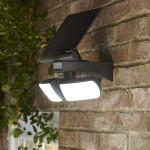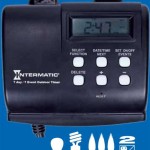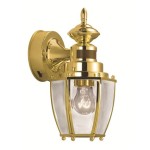Understanding Photocells for Outdoor Lighting Controls
Photocells, also known as photoelectric sensors or light sensors, are integral components in outdoor lighting control systems. They automate the operation of outdoor lights based on ambient light levels, enhancing energy efficiency, improving safety, and reducing manual intervention. This article provides a comprehensive overview of photocells, their functionality, types, applications, and factors to consider when selecting and implementing them in outdoor lighting systems.
The primary function of a photocell is to detect the presence or absence of light and trigger an electrical circuit accordingly. In the context of outdoor lighting, this typically means turning lights on at dusk and off at dawn, aligning lighting operation with natural daylight availability. This automated control minimizes unnecessary energy consumption, extending the lifespan of lighting fixtures, and ensuring consistent illumination when and where it's needed most.
Principles of Operation
Photocells operate on the principle of the photoelectric effect, where light energy is converted into electrical energy. The core component of a photocell is a photosensitive semiconductor material, such as cadmium sulfide (CdS), silicon (Si), or gallium arsenide (GaAs). When light strikes this material, photons release electrons, generating an electrical current. The magnitude of this current is proportional to the intensity of the incident light.
This current is then used to trigger a relay or switch that controls the power supply to the lighting fixture. In bright daylight, the high current generated by the photocell keeps the relay open, disconnecting the power supply and turning the lights off. As the ambient light diminishes at dusk, the current decreases, causing the relay to close and completing the circuit, thus activating the lights. The sensitivity of the photocell determines the precise light level at which this switching occurs, allowing for customization based on specific application requirements.
The switching mechanism typically involves a control circuit that monitors the photocell's output and activates a relay. This relay acts as an electrical switch, controlling the flow of current to the lighting fixture. The control circuit may also incorporate hysteresis, a feature that prevents the lights from rapidly switching on and off due to minor fluctuations in light levels, such as those caused by passing clouds or brief shadows.
Types of Photocells
Photocells are available in various types, each with its own characteristics, advantages, and disadvantages. The choice of photocell depends on factors such as sensitivity, response time, environmental conditions, and cost.
Cadmium Sulfide (CdS) Photocells: These are among the most common and widely used types of photocells. They are relatively inexpensive and have good sensitivity to visible light. However, they are also known for their slow response time, meaning they may not react instantly to changes in light levels. Additionally, CdS is a toxic material, raising environmental concerns regarding disposal and recycling. Due to these concerns, many regions are phasing out or restricting the use of CdS photocells.
Silicon (Si) Photocells: Silicon photocells offer faster response times and are more environmentally friendly than CdS photocells. They are also highly sensitive to infrared light, making them suitable for applications where infrared radiation is present. Silicon photocells are more expensive than CdS photocells but offer better performance and durability.
Photodiodes: These are semiconductor devices that convert light into current. They are highly sensitive and have extremely fast response times, making them ideal for applications requiring precise and rapid light detection. Photodiodes are generally used in more sophisticated lighting control systems and are more expensive than CdS or silicon photocells.
Phototransistors: These are similar to photodiodes but amplify the light-generated current, providing a stronger signal for controlling the lighting circuit. Phototransistors are also faster and more sensitive than CdS photocells, but they are generally more expensive and complex to integrate into a lighting system.
Integrated Photocells: These combine a photocell with a control circuit and relay into a single, compact unit. Integrated photocells simplify installation and wiring, making them a popular choice for residential and commercial outdoor lighting applications. They are available in various configurations and sensitivity settings to suit different lighting requirements.
Applications of Photocells in Outdoor Lighting
Photocells are widely used in a variety of outdoor lighting applications, including street lighting, parking lot lighting, landscape lighting, and security lighting. Their ability to automatically control lighting based on ambient light levels makes them an essential component for energy efficiency and safety.
Street Lighting: Photocells are commonly used in street lighting systems to ensure that lights are turned on when natural light is insufficient to ensure public safety. They help to reduce energy consumption by preventing lights from operating during daylight hours. Modern street lighting systems may also incorporate more advanced control systems that combine photocells with timers and occupancy sensors to further optimize energy efficiency.
Parking Lot Lighting: Parking lots require adequate lighting for safety and security, especially during nighttime hours. Photocells ensure that parking lot lights are automatically activated at dusk and deactivated at dawn, providing consistent illumination and deterring criminal activity. Some parking lot lighting systems also incorporate motion sensors to dim the lights when no activity is detected, further reducing energy consumption.
Landscape Lighting: Landscape lighting enhances the aesthetic appeal of gardens, lawns, and other outdoor spaces. Photocells can be used to automatically turn on landscape lights at dusk, creating a welcoming and visually appealing environment. They can also be used in conjunction with timers to turn off the lights after a certain period, further conserving energy.
Security Lighting: Security lighting provides illumination to deter intruders and enhance safety around buildings and properties. Photocells ensure that security lights are automatically activated at dusk, providing continuous illumination throughout the night. In some cases, security lighting systems may also incorporate motion sensors to activate bright lights when movement is detected, further deterring potential threats.
Factors to Consider When Selecting Photocells
Selecting the right photocell for an outdoor lighting application requires careful consideration of several factors, including sensitivity, response time, environmental conditions, and cost. Making an informed decision ensures optimal performance and energy efficiency.
Sensitivity: The sensitivity of a photocell refers to its ability to detect and respond to low light levels. Higher sensitivity is desirable in applications where lighting is needed even in relatively dim conditions, such as during overcast days or under heavy tree cover. The photocell’s sensitivity should be appropriately matched to the ambient light conditions of the installation location.
Response Time: Response time refers to the speed at which a photocell reacts to changes in light levels. Faster response times are important in applications where rapid switching is required, such as in security lighting systems. Slower response times may be acceptable in applications where gradual changes in light levels are the norm, such as in street lighting systems.
Environmental Conditions: Outdoor lighting systems are exposed to a variety of environmental conditions, including temperature extremes, humidity, rain, and snow. The photocell should be able to withstand these conditions without degradation in performance. Look for photocells that are rated for outdoor use and are resistant to moisture, corrosion, and UV radiation.
Voltage and Current Requirements: The photocell’s voltage and current requirements must be compatible with the lighting system’s power supply. Ensure that the photocell is rated for the appropriate voltage and current levels and that it can handle the load of the lighting fixture. Overloading a photocell can lead to premature failure and potentially damage the lighting system.
Mounting Options: Photocells are available in various mounting configurations, including twist-lock, stem-mounted, and surface-mounted options. Choose a mounting option that is compatible with the lighting fixture and the installation location. The mounting should be secure and stable to prevent the photocell from being dislodged or damaged by wind or other environmental factors.
Cost: The cost of a photocell is an important consideration, especially for large-scale lighting projects. While cheaper options may seem appealing, it is important to consider the long-term costs associated with performance, durability, and maintenance. Investing in a higher-quality photocell may result in lower overall costs over the lifespan of the lighting system.
Compliance and Certification: Ensure that the chosen photocell complies with relevant safety standards and regulations, such as UL (Underwriters Laboratories) or CE (Conformité Européenne). Compliance with these standards ensures that the photocell has been tested and certified for safe and reliable operation. Additionally, check for any local or regional regulations that may affect the use of specific types of photocells, such as restrictions on the use of CdS photocells.
Proper installation and maintenance are also crucial for ensuring the reliable operation of photocells. The photocell should be mounted in a location that is free from obstructions and receives direct sunlight. Regular cleaning and inspection can help to prevent dust or debris from interfering with the photocell's ability to detect light.

Mini Type Outdoor Conduit Lighting Control With Photocell China Photo Sensor Made In Com

Twist Lock 3pin Plug Photocell Photocontrol Receptacle For Outdoor Lighting China Auto On Off Street Light Control Switch Made In Com

Day Night Ldr Photocell Sensor For Automatic Street Light Control As 10

Photocell Outdoor Lighting Control 866 637 1530

Ansi Street Lighting Photocells Te Connectivity

Photocell Switch Manufacturer From China

Design House Swivel Mount 120 Volt Outdoor Photocell With Dusk To Dawn Sensor 588087 The Home Depot

Ac Low Voltage Photocell Accessories Lighting Control Panels Controls And Systems

Photocontrols For Automating Outdoor Lighting Te Connectivity

Buy Walnut Innovations Auto Day Night On Off Photocell Sensor Switch For Lighting Water Proof At Best S In Jiomart
Related Posts







